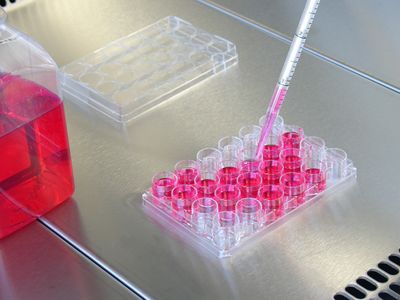
Type 1 diabetes (T1D) is an autoimmune disease where the immune system destroys insulin-producing beta cells in the pancreas. Currently, approximately 1.4 million people live with T1D in the United States, and this number is projected to rise to over 2 million by 2040.1 Without insulin, the body is unable to regulate its blood sugar levels, and many patients with T1D require lifelong insulin injections.
An alternative T1D treatment is clinical pancreatic islet transplantation (CIT), where beta cell-containing islets from a donor enter into a patient’s circulation through the portal vein and ultimately engraft in the liver. While CIT has had promising results, some challenges remain including the need for patients to be on immunosuppressive therapy to avoid transplant rejection, which can lead to opportunistic infections and organ toxicity.2 To avoid administering immunosuppressive drugs, researchers have explored transplanting beta cells encapsulated in materials that physically block immune cell attack. However, these strategies often create hypoxic environments that are detrimental to the cells within. 2
To overcome these challenges, a recent study published in Nature Communications by Alessandro Grattoni and his colleagues at the Houston Methodist Research Institute provides a novel approach for treating diabetes through islet therapy. They developed a 3D-printed, implantable device, named Neovascularized Implantable Cell Homing and Encapsulation (NICHE), that allows blood vessels to penetrate and supply oxygen to encapsulated beta cells.3
Grattoni’s device contains a central reservoir that holds beta cells and a mesenchymal stem cell (MSC) hydrogel, which induces blood vessel formation within NICHE. A U-shaped reservoir containing immunosuppressant drugs surrounds and protects the cells from the immune response once implanted.
“Using a device has some benefits; it can combine the cells in a localized site, and it allows you to administer the immunosuppressive drugs locally,” said Minglin Ma, a professor at Cornell University, who was not involved in this study.
The researchers first tested NICHE’s ability to release drugs from the U-shaped reservoir and enable vascularization within the central reservoir in vitro and in rats, where the device was implanted subcutaneously. “We are able to get a vascularization that guarantees higher levels of oxygen with respect to what you would need to have for islet transplantation. So, the blood vessels are penetrating inside of our device from the outside,” said Grattoni.
Using a device has some benefits; it can combine the cells in a localized site, and it allows you to administer the immunosuppressive drugs locally.
—Minglin Ma, Cornell University
Next, Grattoni and his team tested NICHE subcutaneously in immunocompetent rats rendered diabetic. After implantation, the researchers grouped the rats based on what type of immunosuppression they experienced: some received locally-released drugs from NICHE, others had systemic immunosuppressant injections, and a third control group was given no drugs. After monitoring the rats for more than 150 days, the researchers determined that diabetic rats receiving local or systemic immunosuppressive drugs had major improvements compared to control rats, including significant drops in blood glucose levels within 10 days after transplantation. They also observed fewer cytotoxic T cells and macrophages within the NICHE device in the drug-treated groups.
Additionally, the researchers saw that local and systemic immunosuppression caused similar amounts of vascularization and limited immune cell infiltration within the device. However, local immunosuppression reduced drug accumulation in organs such as the kidney and liver compared to rats receiving systemic treatment, limiting the potential for drug toxicity. “We were very excited about two things. Number one, that we will achieve normoglycemia with this device. And number two is that we confined this suppressor locally,” said Grattoni.
To see how the device worked in nonhuman primates, Grattoni and colleagues also transplanted rat-sized NICHE devices into cynomolgus macaques. Similar to the rats, the transplanted device was extensively vascularized and enabled beta cell survival within the device.
Grattoni is excited for the future of his device. He has received additional funding from the National Institute of Health to scale the NICHE device to better fit diabetic nonhuman primates by accommodating more cells and a larger dose of immunosuppressants. Currently, his team is assessing the best cocktail of immunosuppressant drugs to use for the larger cell reservoir.
References
- Centers for Disease Control and Prevention, “National Diabetes Statistics Report, 2020,” Atlanta, GA: Centers for Disease Control and Prevention, U.S. Dept of Health and Human Services, 2020.
- J. Paez-Mayorga et al., “Emerging strategies for beta cell transplantation to treat diabetes,” Trends Pharmacol Sci, 43:221-33, 2022. doi: 10.1016/j.tips.2021.11.007
- J. Paez-Mayorga et al., “Implantable niche with local immunosuppression for islet allotransplantation achieves type 1 diabetes reversal in rats,” Nat Commun, 13:795, 2022. doi: 10.1038/s41467-022-35629-z




